To paraphrase Thoreau, I wish to speak a word for caterpillars, if only because so few defend or find them beautiful. Maybe their unpopularity, at least in North America, stems from the ravages of the LD Moth, Lymantia dispar (formerly known as the Gypsy Moth), whose larvae appear in their millions year after year to defoliate vast stretches of forests and parks and suburban neighborhoods.
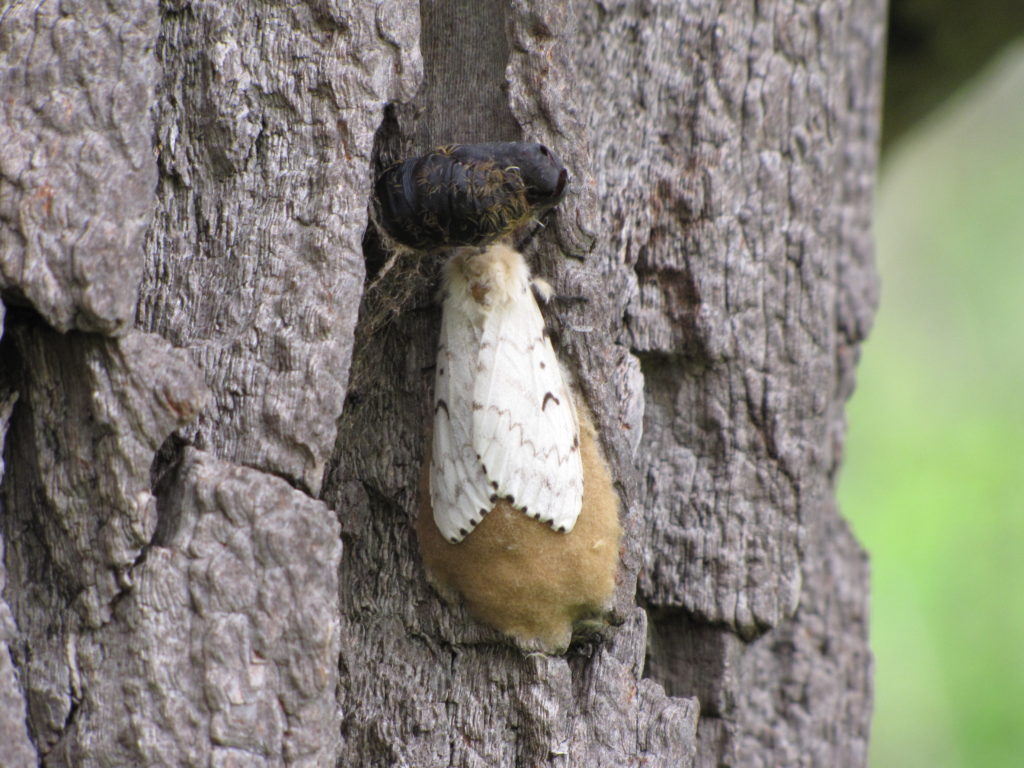
Last summer was particularly bad for LD Moths in Toronto. Walking through High Park in the city’s west end, I could actually hear the noise made by hundreds of thousands of small mouths simultaneously chewing their way through the Oak and Maple and Cottonwood trees. But I have to ask: Is it the caterpillar itself that inspires our irritation, or is it the raw fact of its numbers that overwhelms us? If we consider the LD Moth caterpillar in itself, which is to say, a single specimen and without the shadow of a million more lurking in the background, then we may have to admit that it’s undeniably beautiful in color and construction.
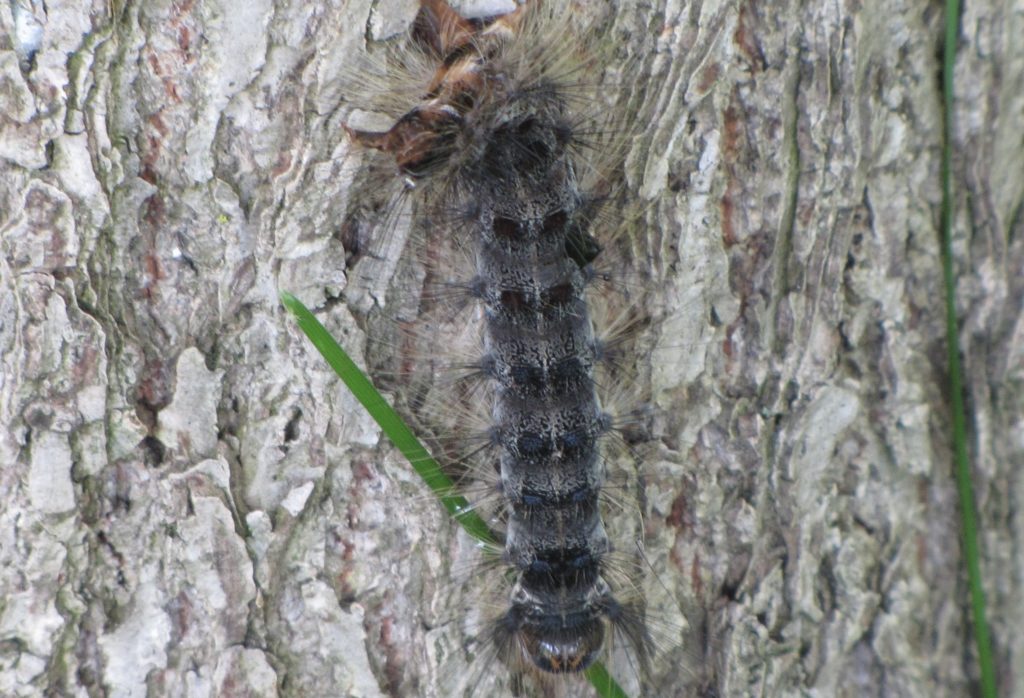
And if even the LD Moth caterpillar can be considered handsome in its own way, then what about all those others whose colors are even more striking and whose bodily architecture is even more outlandish? Let’s look at a few different species to see if we can understand the basis of their charm.
I’m fond of the Eastern Tent Caterpillar, Malacosoma americanum, because of the neon blue patches that run along its sides. Generally speaking, a bright shade of blue is not the first color that comes to mind when we think of caterpillars. So it’s always a thrill to find one of these Tent Caterpillars in the spring along a forest edge, and always a relief to understand I’m not looking at yet another LD Moth cat, which it resembles.
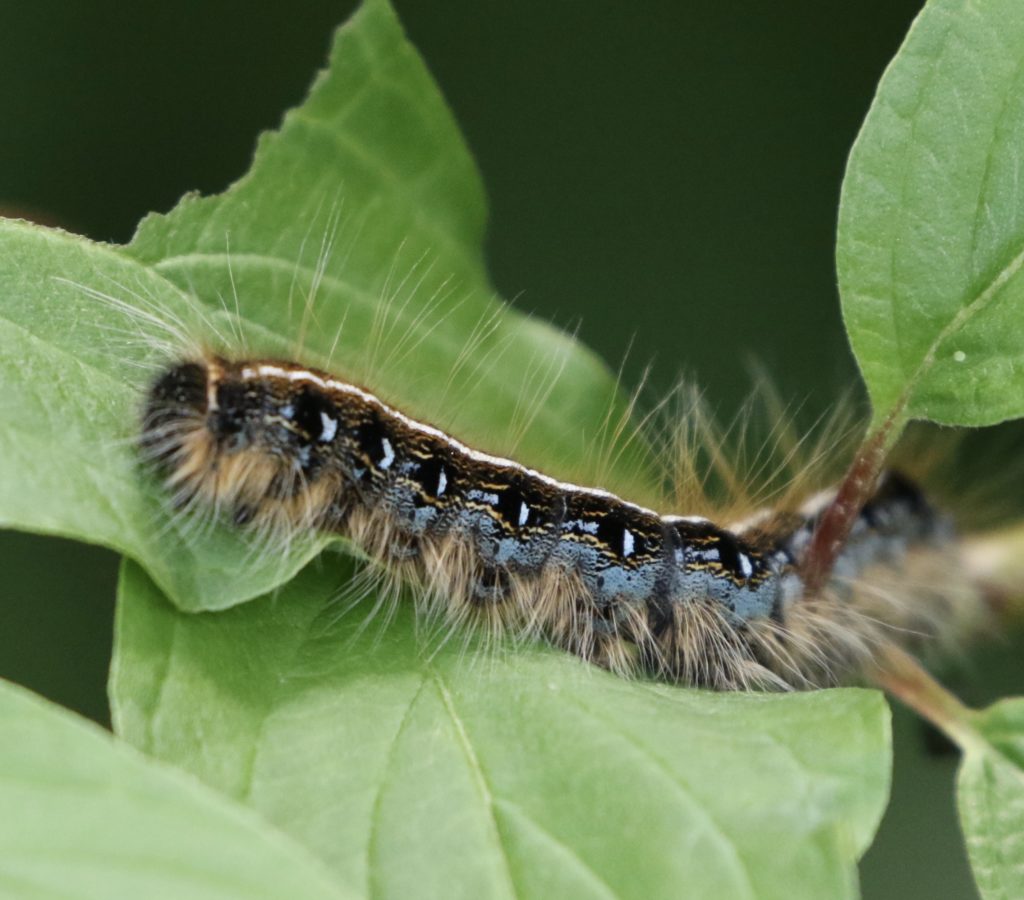
Its bold colors mean that the Spotted Datana Moth caterpillar, Datana perspicua, will never be mistaken for an LD Moth. In the Toronto area, this caterpillar congregates on the branches and fruit clusters of Staghorn Sumac, one of its favorite foods. Like all Datana moths, the Spotted Datana is something of a contortionist. When threatened, it thrashes about, then holds both ends of its body aloft, sometimes to the point of forming a circle.
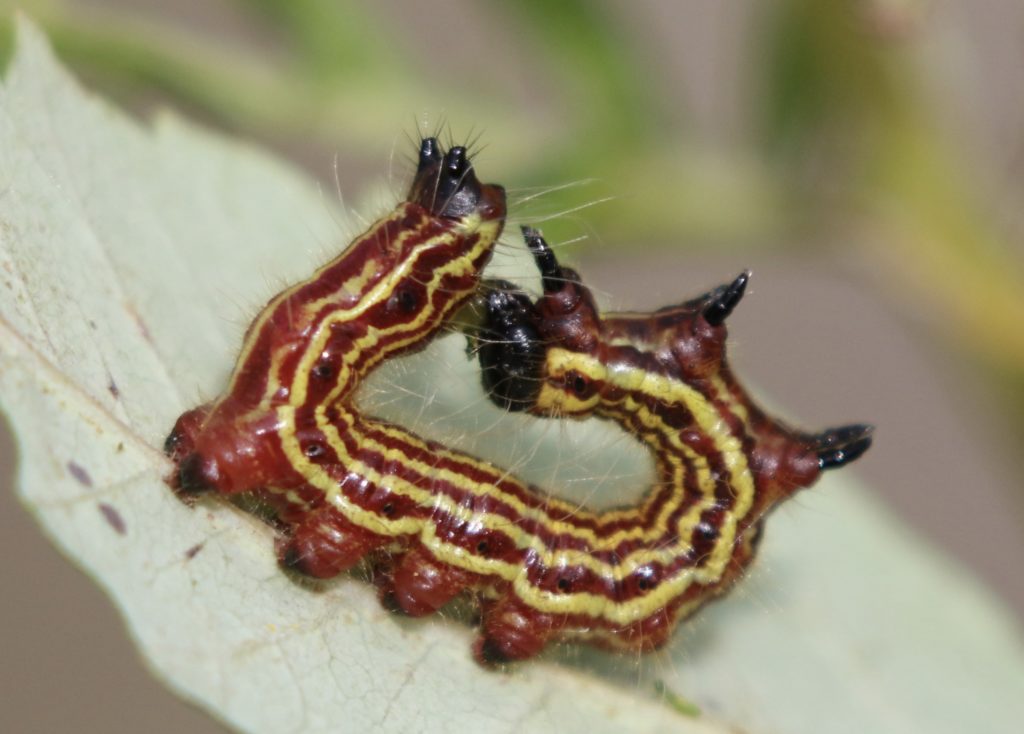
The Angle-lined Prominent, Clostera inclusa, is a rare moth in the Toronto area, so I was fortunate to find a group of its caterpillars last summer while walking through a Poplar grove in Tommy Thompson Park. I noticed a leaf at the end of a branch was furled in on itself and showing a bit of white silk. On unfolding the leaf, I was amazed to find a dozen yellow-and-black caterpillars, each with a pair of dark knobs on its back.
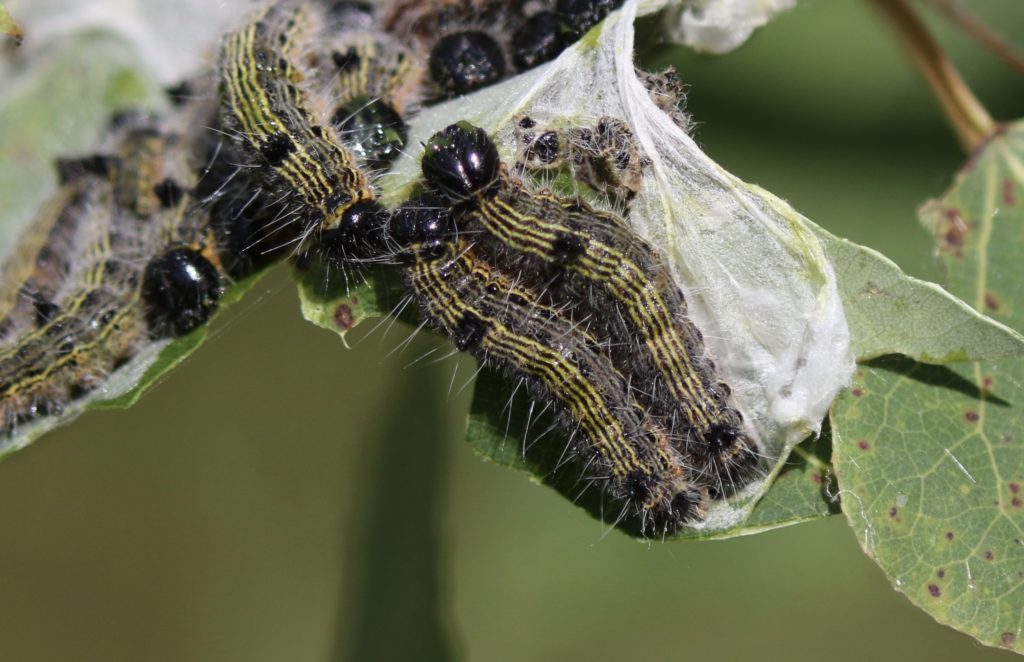
So far, we’ve considered what biologists call “gregarious” caterpillars, those that like to live with others of their kind, perhaps because instinct tells them that safety lies in numbers. There are many solitary caterpillars, however, and among them are some of the largest and most strikingly colored.
One of my favorite solitary cats is that of the Smeared Dagger moth, Acronicta oblinita. My fascination with this species developed after another enthusiast showed me a photo she’d taken in a park on the Toronto waterfront. She’d just seen the caterpillar, she said, and gave directions so I could find it myself. Gone, of course. It wasn’t until the following summer that I managed to find one of these impressive cats feeding on a stalk of Purple Loosestrife. Just as I snapped the photo, the caterpillar lifted its rear and expelled a pellet of frass, which the Oxford Dictionary defines as “the excrement of insect larvae.” Timing is everything.
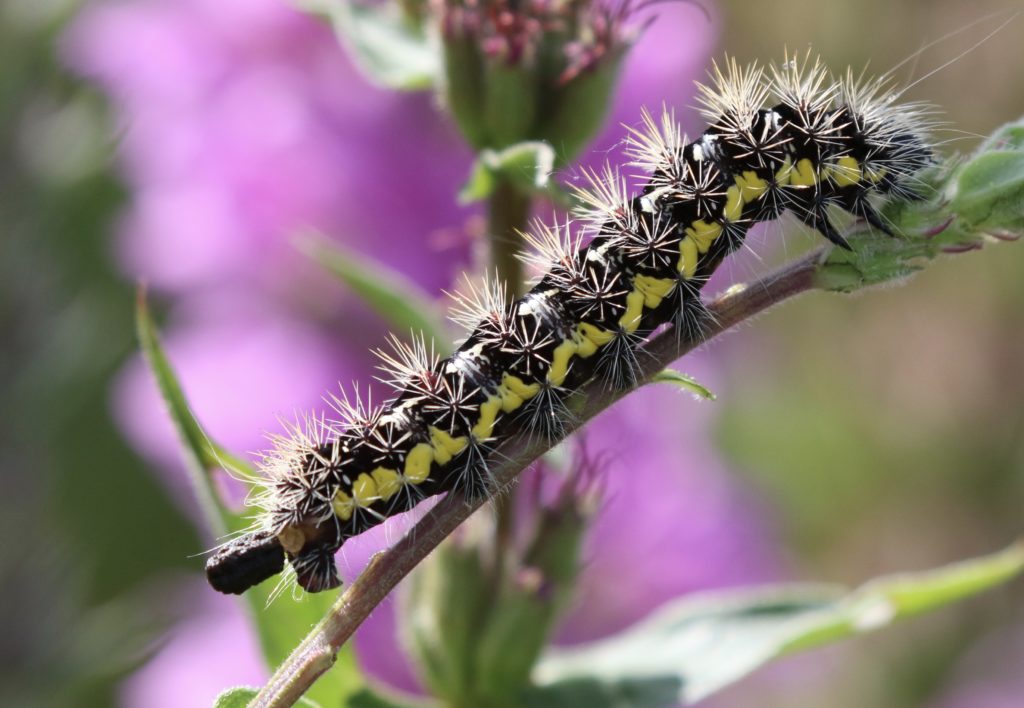
Another caterpillar I found feeding on Purple Loosestrife was the provocatively named Pearly Wood Nymph, Eudryas unio. Unlike the Smeared Dagger, the Pearly Wood Nymph cat is hairless and smooth bodied. Its attractive color scheme consists of alternating bands of orange, black, and white.
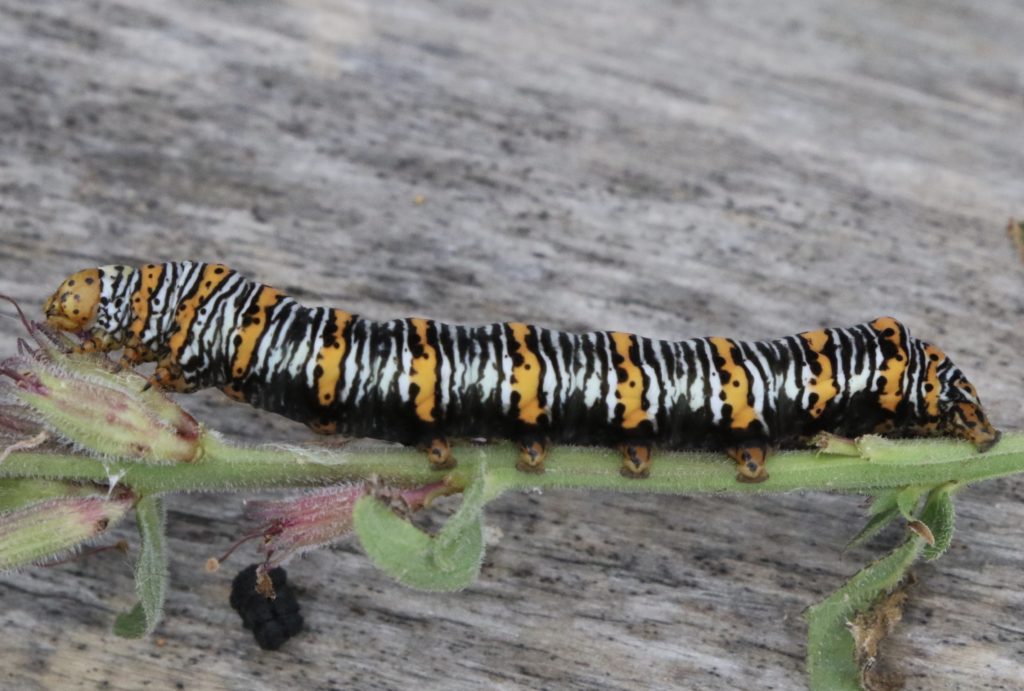
As summer passed into fall, I hunted more assiduously and with precious little success for the spectacular caterpillars of the various Giant Silkworm and Sphinx moths. In early September, I spent a morning examining Oak trees in Tommy Thompson Park because I’d read that their leaves are a favorite food of these king-sized caterpillars. I couldn’t find one to save my life. It wasn’t till I took a break and was having a cup of tea, that I felt something cold on my head, just below the line of my baseball cap. When I ripped the blob off and tossed it aside, I saw it was a large, fluorescently green caterpillar, or just what I’d been searching for all morning. The Polyphemus Moth cat, Antherea polyphemus, was dead by this time, but still made a fine photo subject.
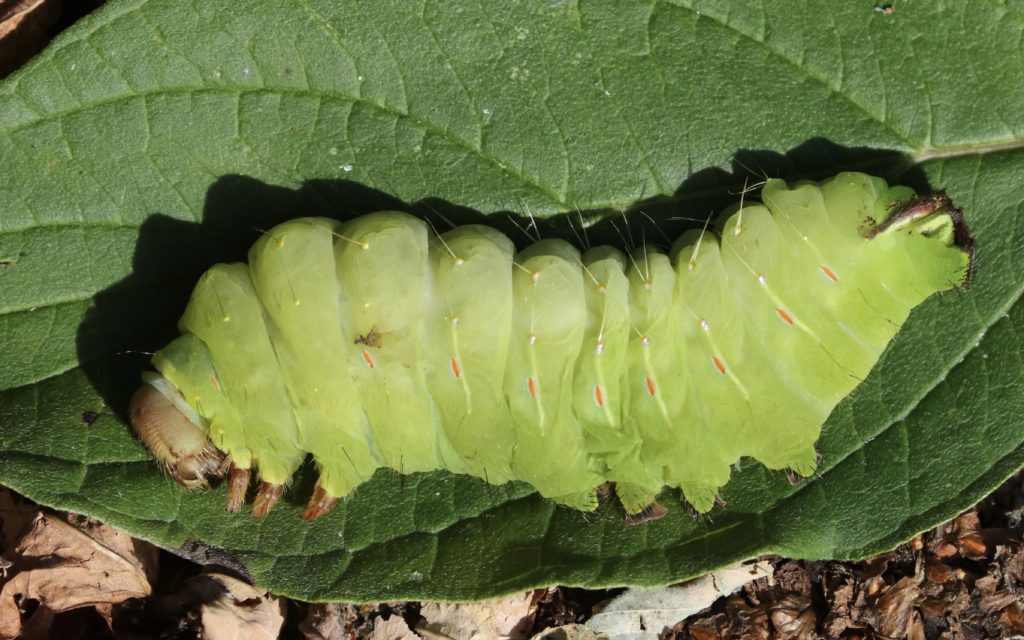
Two weeks later, a friend emailed me photos of a Pandorus Sphinx caterpillar, Eumorpha pandorus, she’d found in Ashbridges Bay Park. I went the next day and, with the help of another aficionado, finally found the cat resting on a wild grapevine, a favoured food plant. We removed the caterpillar to a nearby rock for photos, then carefully put it back in place. Another cat that appears in different color forms, this one was a beautiful shade of burnt orange.
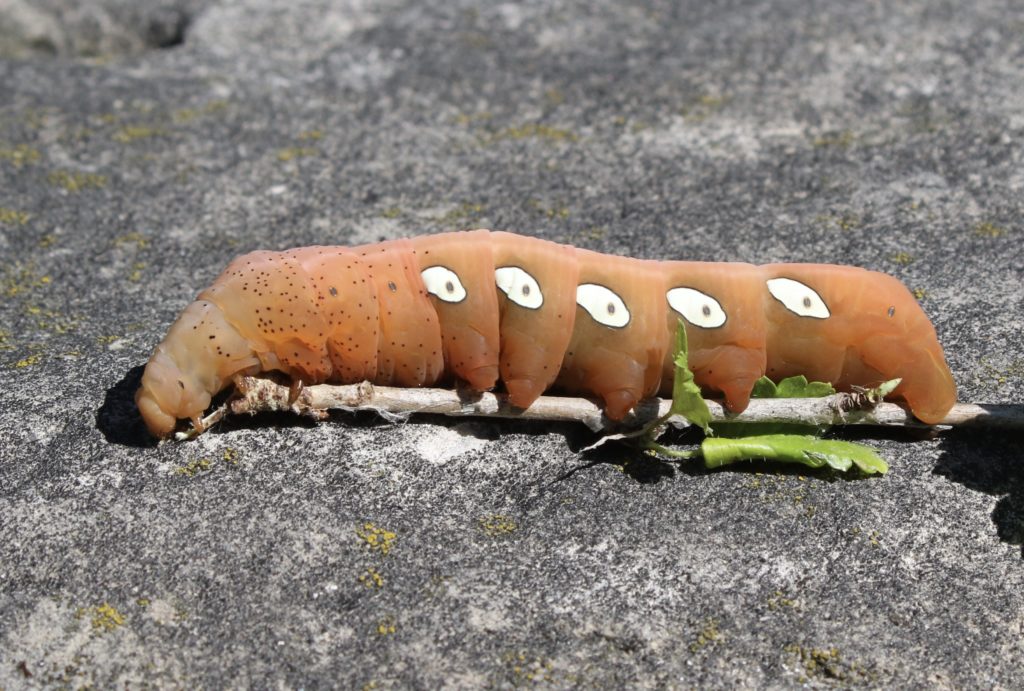
Whenever I do a survey of this sort, people want to know what my own personal favorites might be among the creatures I’ve cited. So to clear the air beforehand, I’ll admit I love the caterpillars of the Geometer Moths more than any others. And this is true even though Geometers aren’t the most colorful cats or the most outlandishly constructed. What I like about them is the way they move, humping themselves along from place to place in a manner that has earned them the nickname of “inch worms.” Also, they’re masters of camouflage. Some of them so closely resemble the twigs of the plants they feed on that they’re practically invisible when holding still.
Last year, I saw my first Geometer cat in early June. The Small Phigalia, Phigalia strigataria, sports a dark racing stripe along the side of the abdomen and a pair of bumps on the back. It can be difficult to see because of its small size, about 3 cm or just over an inch in length.
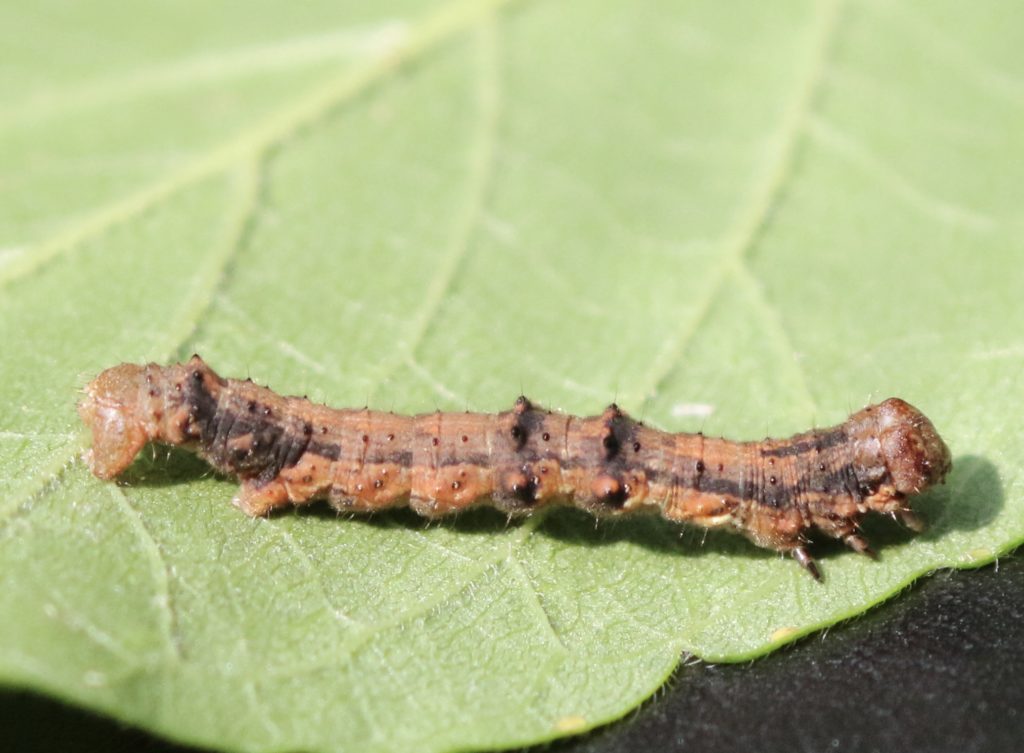
The last Geometer I saw appeared on a sweltering day in July. It was on the hand of a young woman leading a day camp in Taylor Creek Park. “Hey everyone,” I heard her say, “Aisha found a caterpillar that looks just like a twig.” When I asked if I could take a few photos, she consented immediately, perhaps because my interest seemed to ignite the enthusiasm of her campers. The Curved-tooth Geometer caterpillar, also known as the Purplish-brown Looper, Eutrapela clemataria, is almost twice the size of the Small Phigalia. And it does bear a remarkable resemblance to the twig of a deciduous tree.
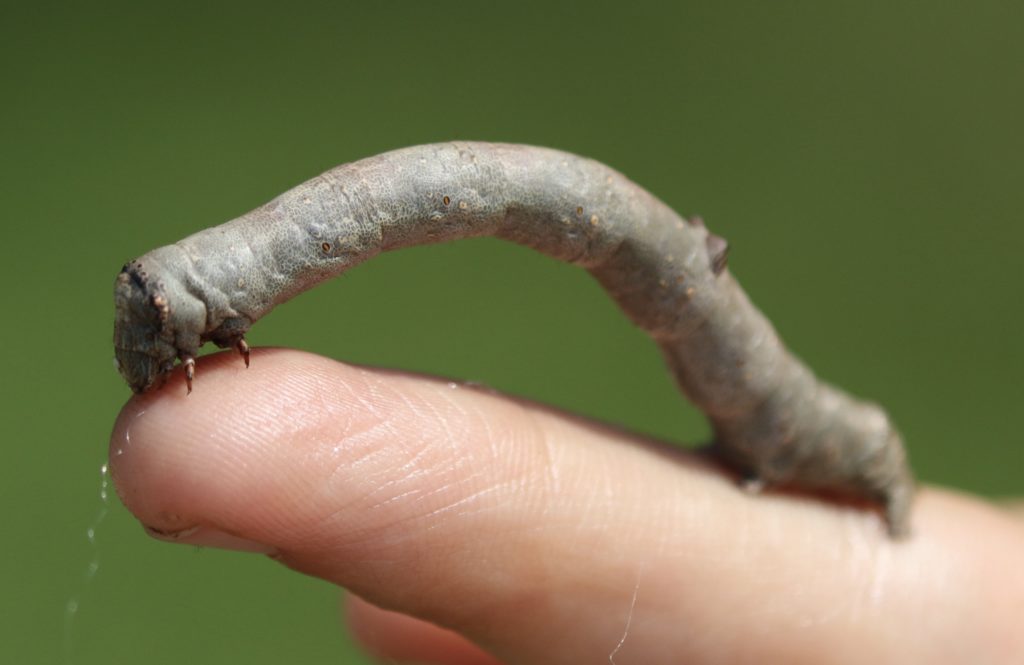
That’s it! I hope this brief, informal survey has been enough to spark your interest in these unusual creatures. For me, they represent the teenagers of the insect world; they’re all small packages of potential. And like teenagers everywhere, they have an attitude and appearance that alternate between charming and repellant. The French writer Arthur Rimbaud began one poem with the observation, “Nobody’s serious at the age of seventeen.” Maybe that’s what attracts me to caterpillars. Their insouciance, their carefree refusal to take the predators and parasites that threaten them too seriously, even as they go about the dangerous business of turning themselves into adults.
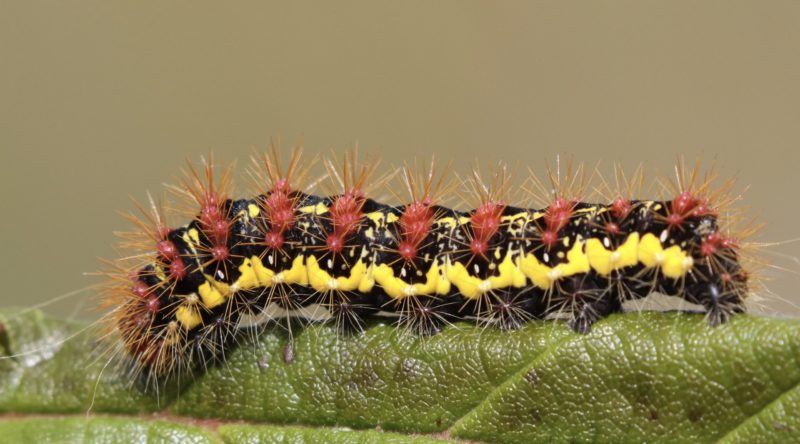
Ed, I learn something (many things) from every one of your blogs. This was fascinating. I learned a new word, “frass” which I conclude is short for “from ass”!
Thanks, Bob–I’m very glad you enjoyed the post and learned something from it. I haven’t seen that derivation before, but if nothing else, it’s a handy mnemonic!
Enjoyable and instructive! Before this, I can’t imagine that I would find—much less read through with relish—an article on creepy crawlies so compelling. It has to be simple and straightforward for those of us not scientific in our way of thinking, and this is so clear, with such stunning photos, that we are drawn into their worlds of rest, procreation and defense. I can’t wait for the next one! Bravo!
Thanks, Jeannette. There was a time in my life when I couldn’t imagine being fascinated by caterpillars either. I guess sometimes the process of aging opens us to new experiences and to seeing the world in different ways.